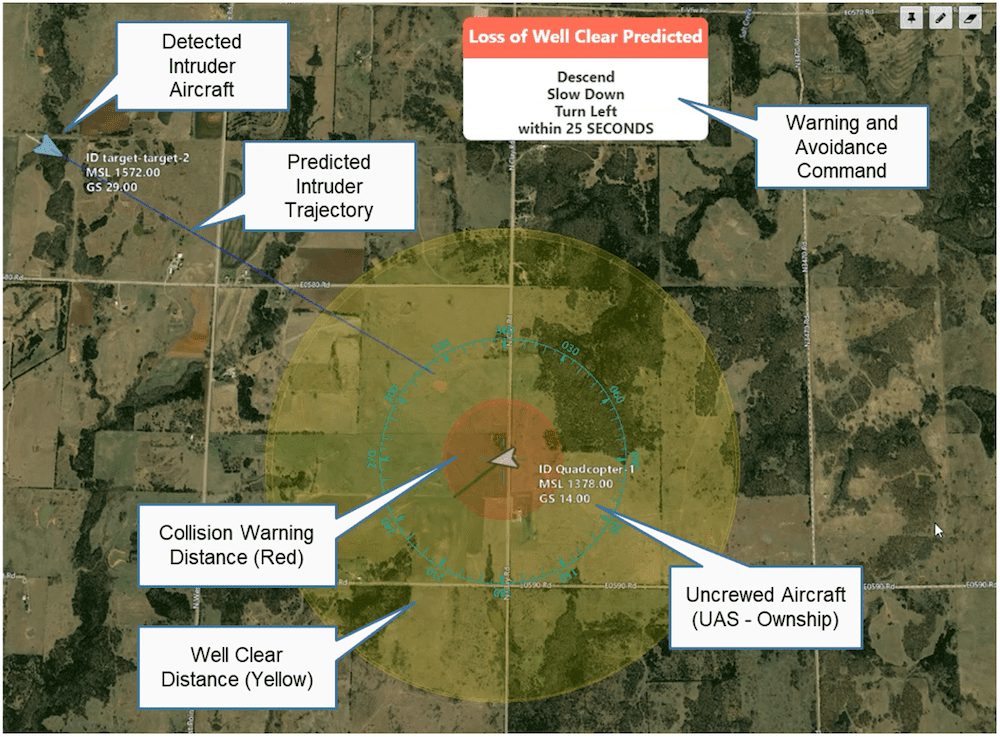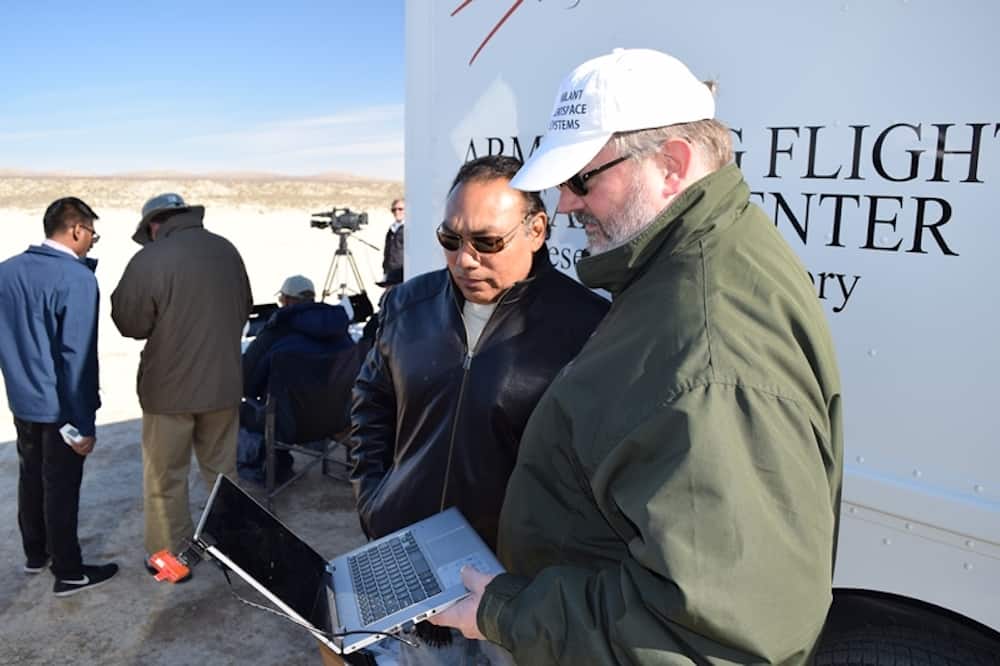



Vigilant Aerospace’s FlightHorizon providing collision avoidance for a UAS.
Technology used in Vigilant Aerospace’s FlightHorizon Detect-And-Avoid (DAA) and airspace management product has won NASA’s Commercial Invention of the Year 2021 award.
The winning technology was invented by NASA Senior Research Engineer Ricardo Arteaga working with a team at NASA Armstrong Flight Research Center in Edwards, California. The resulting patents were licensed to Vigilant Aerospace Systems, Inc. of Oklahoma City and Fargo, ND and form the basis for the company’s FlightHorizon commercial products.
The invention provides a method for Unmanned Aerial Systems (UAS) to automatically detect and avoid other air traffic, which is a critical safety function for the advancement of the UAS industry and the future of autonomous aviation.
FlightHorizon is detect-and-avoid and airspace management software that fuses data from aircraft transponders, radar, drone autopilots and live FAA data to create a single picture of the airspace around a drone. The software displays air traffic, predicts trajectories and provides avoidance maneuvers to the UAS pilot or autopilot. The system can be used on the ground or onboard the UAS and can be configured for any size aircraft. It is designed to meet industry technical standards and to help UAS operators to fly Beyond Visual Line-Of-Sight (BVLOS) under waivers or new FAA BVLOS rules.
“We are deeply grateful for the recognition from NASA provided by this national award,” said Kraettli L. Epperson, CEO of Vigilant Aerospace. “Ricardo and his team at NASA Armstrong were visionary in their foresight about the technology that the aviation industry would need to maintain safety in an increasingly autonomous world. They worked hard to develop the industry’s leading technology for automatic collision avoidance on UAS. We believe that this invention fills a critical technology gap and will help lead the U.S. into a new era of safe autonomous aircraft flight. We believe that this invention fills a critical technology gap and will help lead the U.S. into a new era of safe autonomous aircraft flight.
“For Vigilant Aerospace, this award culminates an outstanding 12-month period of rapid technical and industry development. We recently finished serving on the FAA’s beyond visual line-of-sight rulemaking committee working on new rules for drone flight in the U.S., participated in Virginia Tech’s national detect-and-avoid trials, deployed our software to the Northern Plains UAS Test Site in North Dakota and completed groundbreaking beyond visual line-of-sight flights with the Alaska UAS Test Site under an FAA contract.”


Find suppliers and manufacturers of Detect and Avoid Solutions for Drones & UAV >>





Related Posts
New Drone Fires Thales Missile in Unmanned Air Combat Milestone
UAS Startup Accelerator Awards 3M in Funding
US Navy Orders Unmanned Tactical Resupply Aircraft